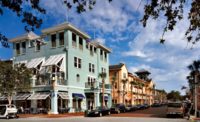|
Raimund J. Abraham, an Austrian-born architect and educator, remembered as an unflinchingly independent thinker, died in a traffic crash on March 4th. The early-morning collision between the car he was driving and a city bus came after the dinner following a lecture he’d given at SCI-Arc, where he was currently visiting faculty. He was 76 years old.
Known for his bladelike Austrian Cultural Forum building [RECORD, August 2002], in New York, and his forceful, deeply textured, often visionary hand-drawings, Abraham was most of all a passionate and influential teacher. Closely allied with John Hejduk’s leadership at the Cooper Union, he taught there—for three decades beginning in 1971—and also at schools including the Pratt Institute, Harvard, and Yale. A familiar figure with his fedora and shaggy, grey mustache, he had a legendary personality, ranging from cantankerous to warm and inspiring. With classic Abraham idealism, rousing his students to pursue alternative paths, his final lecture concluded with: “You don’t have to become a slave in a corporate office or a groupie of a celebrity architect. All you need is a piece of paper, a pencil, and the desire to make architecture.”
For him, drawing was a form of architecture, as significant as completed buildings. Refusing to bend to the sway of architectural fashion, he built few projects. They include a house in Vienna; low-income housing in Rhode Island and Berlin; New York City’s Anthology Film Archives (with Bone Levine, an interior conversion of an historic courthouse); a bank in Lienz, Austria; JingYa Ocean Entertainment Center, a Beijing spa; and his own beach house on Mexico’s Oaxacan Coast.
Click on the slide show icon to see additional photos.
His Austrian Cultural Forum—a 24-story sliver, barely 25-feet across—had particular impact on the public imagination. He once described its jagged, steeply inclined, glass-and-zinc façade as "a curtain wall that falls down like a guillotine." After beating out 225 other Austrian architects for the commission, he spent a decade realizing it to his exacting specifications, completing it in 2002. The building’s dark and inextricable coupling of aesthetic beauty with danger embodies a theme that permeated his work, tracing back to his childhood.
Born on July 23, 1933, in the Tyrolean town of Lienz, Abraham grew up in the Austrian Alps, where, during World War II, he said in a 2001 interview, “horrifying experiences shaped my aesthetic. I saw buildings disappear . . . the entire sky covered with airplanes. But do you have any idea of what a beautiful sight that is— an iron sky?” That fusion of terror and fascination were, he later said, “all there in my work.”
After earning his architecture degree in Graz and practicing in Vienna, he came to RISD in 1964 for a “two-week” teaching stint that ultimately evolved into permanent residence in the States. He became a US citizen in 2002, when he renounced his original nationality in protest of Austria’s legitimization of Jörg Haiden’s far-right party.
Since leaving Cooper Union, in 2002, Abraham divided his time among Manhattan, Los Angeles, and the Oaxacan Coast, where he built the rustic house Austrian architect Wolf Prix cannily described as “a Tyrolean farm shed transplanted to Mexico.”
Abraham is survived by a daughter, Una Abraham, a chef/restaurateur, a granddaughter Samira Hold, both of Austria, and his longtime companion, artist Joan Waltemath, of New York.
Anti, a Journey to Architecture, a book he co-authored with Lebbeus Woods, awaits publication. Abraham’s final project, the Musicians’ House—a concrete silo in Insel Hombroich, Germany, housing a small artists’ residence and music hall—is under construction.
Visit the SCI-Arc’s Web site to watch Abraham’s last lecture and to see additional photos of the architect.





Post a comment to this article
Report Abusive Comment